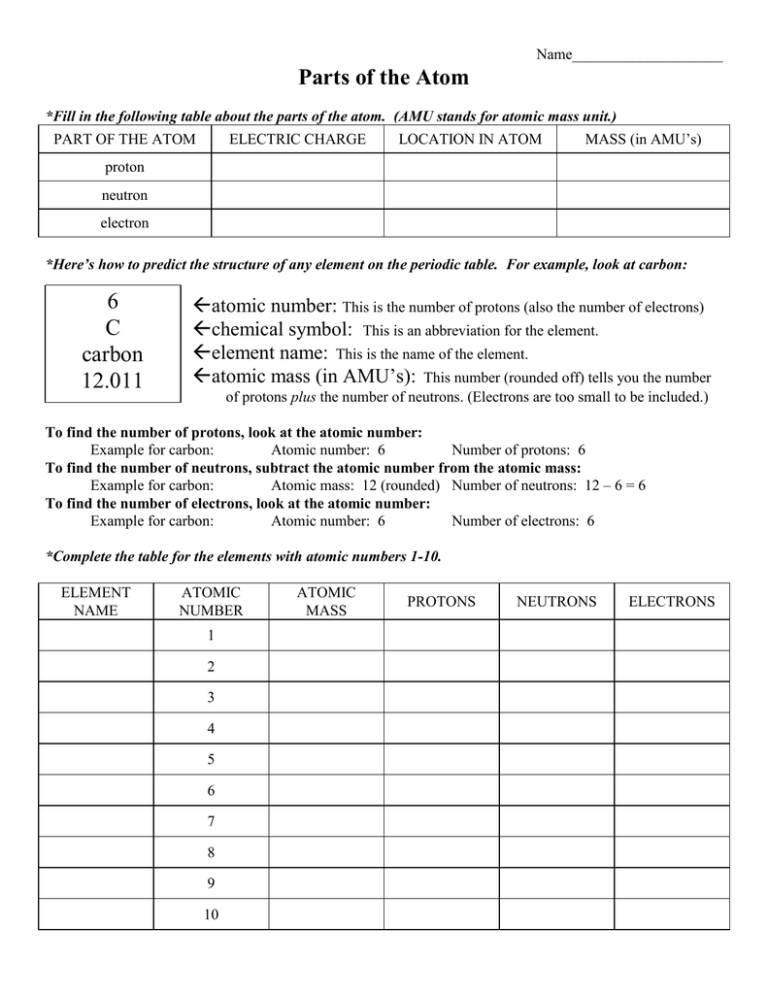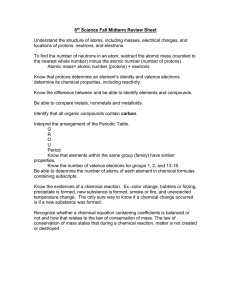Parts of the Atom Worksheet
advertisement

Name____________________ Parts of the Atom *Fill in the following table about the parts of the atom. (AMU stands for atomic mass unit.) PART OF THE ATOM ELECTRIC CHARGE LOCATION IN ATOM MASS (in AMU’s) proton neutron electron *Here’s how to predict the structure of any element on the periodic table. For example, look at carbon: 6 C carbon 12.011 atomic number: This is the number of protons (also the number of electrons) chemical symbol: This is an abbreviation for the element. element name: This is the name of the element. atomic mass (in AMU’s): This number (rounded off) tells you the number of protons plus the number of neutrons. (Electrons are too small to be included.) To find the number of protons, look at the atomic number: Example for carbon: Atomic number: 6 Number of protons: 6 To find the number of neutrons, subtract the atomic number from the atomic mass: Example for carbon: Atomic mass: 12 (rounded) Number of neutrons: 12 – 6 = 6 To find the number of electrons, look at the atomic number: Example for carbon: Atomic number: 6 Number of electrons: 6 *Complete the table for the elements with atomic numbers 1-10. ELEMENT NAME ATOMIC NUMBER 1 2 3 4 5 6 7 8 9 10 ATOMIC MASS PROTONS NEUTRONS ELECTRONS *Here’s how to draw an atom of any element using the Bohr model of the atom: Protons and neutrons go in the nucleus (center). Electrons go in energy levels of the electron cloud. The first energy level only holds up to 2 electrons. The second energy level holds up to 8 electrons. The third energy level holds up to 18 electrons. P= N= Example for carbon: 6 electrons total First 2 electrons in the 1st energy level Next 4 electrons in the 2nd energy level The electrons in the outermost energy level are called valence electrons (V.E.) Example for carbon: 2nd energy level is the outermost energy level used by carbon Carbon has 4 valence electrons *Draw a picture of an atom for each of the first ten elements and write the number of valence electrons. 1. hydrogen V.E._____ 2. helium V.E._____ 3. lithium V.E._____ 4. beryllium V.E._____ 5. boron V.E._____ 6. carbon V.E._____ 7. nitrogen V.E._____ 8. oxygen V.E._____ 9. fluorine V.E._____ 10. neon V.E._____





